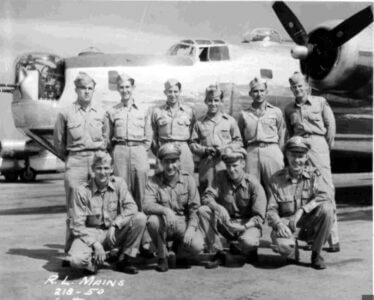What’s the hardest thing you’ve ever done? Having babies doesn’t look like much fun, but I’m a guy. I’m afraid that particular ordeal is not on my dance card.
Thank you for reading this post, don't forget to follow and signup for notifications!

Medical school sucked. It was long and grueling, and I had to hustle every day to keep up. However, I got to sleep at home–for the most part–and nobody was trying to kill me, so there’s that.

I did lots of hard things in the Army, but I resigned my commission just before 911. The Global War on Terror was destined to become somebody else’s problem. I did five NTC rotations, jumped out of airplanes, and spent a year with the grunts as an Aviation Liaison Officer. My knees and back remind me of that stuff every single morning. It would appear that the primary mission of the military is not to create healthy, well-adjusted veterans. Regardless, throughout it all, the overwhelming probability was that I would survive to get home to my family.
1LT Robert Mains was a bomber pilot and newly minted father in 1945. He was young, idealistic, and dedicated. For 1LT Mains and his nine-man crew, every day they got up and went to work, they ran a very real risk of violent, gory death.
Young people perish in war. That’s what makes the practice so abjectly horrible. Kids are cut down in the prime of their lives. In the case of 1LT Mains, he was only 28 years old the day he rode his B-24 Liberator in over Ludwigslust, Germany.
1LT Mains was the aircraft commander of Ford B-24 M Liberator serial number 44-50838. The crew had named the plane Red Bow. I have no idea why. At 28, 1LT Mains was the old man of the group. Most lower enlisted soldiers were little more than souped-up teenagers. However, they were all called upon to do some very adult things.

The B-17 Flying Fortress got most of the press. She was an elegant, sleek, sexy beast. By contrast, the B-24 Liberator was a bomb truck. It was also the more common plane. With 18,188 copies in service, the B-24 was the most-produced American combat aircraft of the war.
Sporting a max gross weight of 65,000 pounds, a range of 1,540 miles, and a maximum allowable payload of up to 8,000 pounds, the Liberator did its share of the heavy lifting during the Allies’ relentless daylight onslaught against strategic targets in the Third Reich. Curiously, the British Avro Lancaster sported a maximum bomb load of 22,000 pounds. However, there was way more to it than just raw bomb tonnage. The B-24 also packed a whopping ten M2 Browning .50-caliber machine guns. These weapons were designed to kill German pilots.

Losses during daylight bombing raids, particularly early in the war, were astronomical. However, pulverizing German strategic targets was only part of the job. Allied planners knew that the Germans would be obliged to defend against these raids, some of which eventually involved more than a thousand four-engine bombers at a time. Every German fighter shot down carried an irreplaceable German fighter pilot. The more German fighter pilots we killed or maimed, the easier the bomber crews’ jobs became. By war’s end, the German fighter corps was a shell of its former self. That didn’t mean they weren’t still dangerous.
1LT Mains’ Liberator was assigned to the 714th Bombardment Squadron (Heavy), 448th Bombardment Group (Heavy), based at RAF Seething, Norwich, England. Their target this day was an enemy airbase at Wesendorf, Germany. The attack consisted of 438 American heavy bombers. The Germans threw everything they had at them.
Oberleutnant Rudolf Rademacher of Gruppe II, Jagdgeschwader 7 (11./JG 7), based at Parchim, Germany, was 31 years old on 4 April 1945 when he answered the scramble call. By the standards of the day, Rudi Rademacher was positively ancient. He had already done more than his part for the Fatherland.

Rademacher had flown more than 500 combat missions. American pilots would fly a certain amount of time or a proscribed number of missions and then rotate home to help train fresh aircrews. By contrast, German pilots flew until they died. This allowed the Luftwaffe Experten to rack up astronomical kill counts, but it didn’t do much for their mental health. By the 4 April mission, Rademacher had already logged 97 victories, fifteen of which were those prickly four-engine heavy bombers.

Rademacher’s mount was the terrifying new Me 262 A-1 twin-engine jet fighter. The Me 262 was Hitler’s premier wunderwaffe—his vaunted wonder weapon that was designed to turn the tide of the war. With a max speed of 515 mph in level flight and 590 mph in a 30-degree dive, the Me 262 outclassed absolutely everything the Allies could throw at it. For comparison purposes, the legendary P-51 Mustang topped out at 440 mph. In a dive, the Me 262 was fully 150 mph faster than the P-51. 150 mph is a quantum leap ahead in that space. Against congested American bomber formations, the Me 262s were pure, unfiltered murder.
The Me 262 was designed from the outset as a heavy bomber killer. Hitler dreamt for a time of using these sleek planes as medium bombers, but that was abjectly stupid. Shooting down Liberators and Fortresses was the Me 262’s forte.

The Me 262 came equipped with four Rheinmetall-Borsig MK 108 30mm autocannons with a total of 360 rounds of ammunition–100 shells apiece for two guns and 80 each for the remaining two. All four of these guns were concentrated in the nose to produce a dense volume of high-explosive 30mm rounds. Additionally, the Me 262 could carry up to 24 R4M Orkan 55mm unguided air-to-air rockets.
Orkan is German for hurricane. Each R4M weighed 8.49 pounds and included a set of folding fins in the base. The R4M carried a 1.15-pound payload of high-explosive HTA 41 Torpex. This same rocket could be fitted with the shaped charge warhead from an 88mm Panzerschrek for use against hardened ground targets. A single standard R4M was more than adequate to bring down an American heavy bomber. Rudi Rademacher wielded these rockets like a cudgel.
One Luftwaffe fighter jock described attacking American heavy bomber formations as being akin to copulating with a porcupine. The American planes flew in tight formations specifically designed to maximize the effectiveness of their defensive firepower. In this configuration, these bomber boxes typically cruised at around 215 mph.

Despite the 300 mph speed advantage, the Me 262’s still faced the daunting task of getting in close enough to get off an accurate burst or loose their deadly rockets. On this day, Oberleutnant Rudolf Rademacher pulled it off. The results were catastrophic for 1LT Mains and his crew.
History has shown without a doubt that the Nazi cause was corrupt to its core. There is a reason that the Germans make the best villains in most any decent action movie. At this time and at this place, however, Oberleutnant Rademacher was fighting for his homeland. The bombs that Mains and his mates dropped were falling on Rademacher’s countrymen. That drove what few experienced Luftwaffe fighter jocks who remained to attack recklessly and relentlessly.
One of Rademacher’s R4M rockets struck the big Liberator in the aft fuselage just behind the bomb bay. The detonation killed the two waist gunners outright and blew the big plane in half. The shattered machine then fell to earth in two major chunks.
Details

Most of these missions were flown at somewhere around 25,000 feet—nearly five miles above the surface of the earth. Even when catastrophically damaged, these big planes took a while to reach the ground. Red Bow’s final moments were fraught with pathos.
The tail gunner on the B-24M sat strapped into his drum-shaped two-gun powered turret oriented between the twin vertical stabilizers. Disarticulated as it was from the rest of the airplane, the tail assembly began spinning like an enormous aluminum leaf. Centrifugal forces pinned the poor man in his position. Unable to extricate himself from the suffocating confines of his turret, Red Bow’s tail gunner died alone.
The rest of the crew fared little better. The interior of these big bombers was incongruously cramped. Most of the crewmembers were expected to snap their parachutes in place and then make their way to their respective egress points. With Red Bow now bereft of its tail assembly, there simply wasn’t any way to do that. Most of the rest of the crew died at their stations. However, there was one gleaming exception.

Like real estate, escaping from a stricken combat aircraft boiled down to location, location, location. Technical Sergeant Charles E. Cupp, Jr., the doomed plane’s radio operator, was stationed just ahead of the bomb bay. He also had enough space to keep his parachute handy. When the rocket blew the plane in half, the bomb bay suddenly became a gaping void open to space. TSGT Cupp simply dove out of the hole.
Despite the rarefied altitude, Cupp got his parachute deployed and reached the ground safely. As he came down over the very country he had only moments before been bombing, his reception was less than cordial. Miraculously, he ended up in a POW camp and ultimately survived the war.
READ MORE HERE: Joseph Drexel Biddle: Father of Marine Corps Close Quarters Combat
A crewmember on a sister plane happened to have a camera on this mission. He also just happened to snap a picture of Red Bow just as the rocket blew it in two. The resulting profoundly poignant image has captured the imagination of military aviation enthusiasts for more than half a century. More than just a shattered airplane, this is the picture of the deaths of nine young American heroes frozen in time.

The rest of the crew rode the plane in. What remained of the massive machine ended up punched deep into the German dirt. As a result, the families of Red Bow’s crew were deprived of the closure that comes from recovering their loved ones’ remains. They were listed as Missing in Action.
In 2014, a US government forensics team excavated the site. During the course of the excavation, they recovered human remains that were then identified via DNA assays as being those of 1LT Robert Mains. He was finally laid to rest back home in New York in 2017.
1LT Mains fathered a daughter. The young Army Air Corps pilot held his newborn baby, Barbara, exactly one time back in August of 1944 before shipping out for Europe and the war. 72 years after her father had been declared MIA, Barbara O’Brien of Stony Brook, New York, finally got her Daddy back–a hero who gave absolutely everything so his little girl could be free.
*** Buy and Sell on GunsAmerica! ***
Available on GunsAmerica Now













